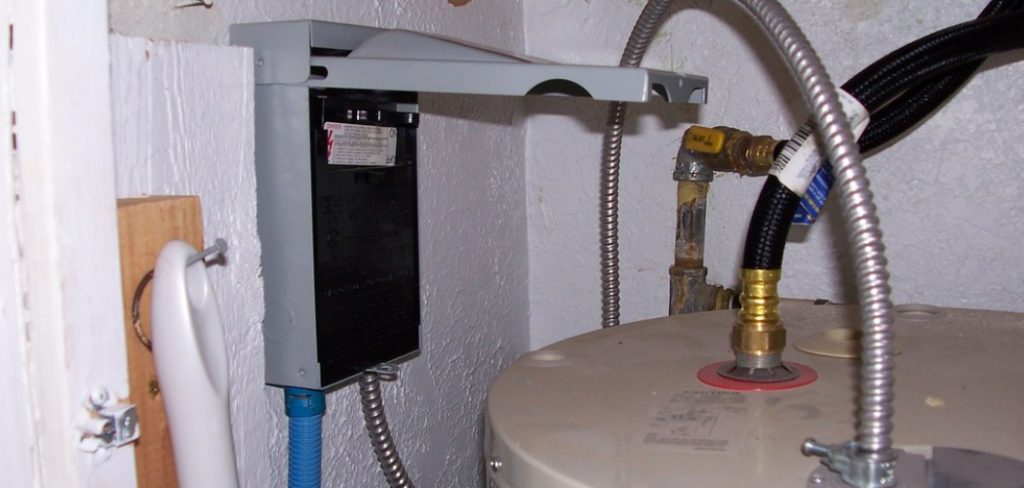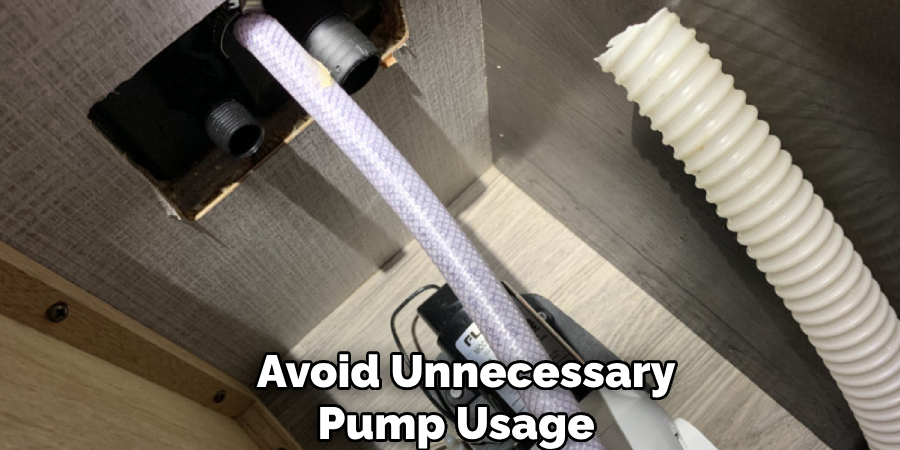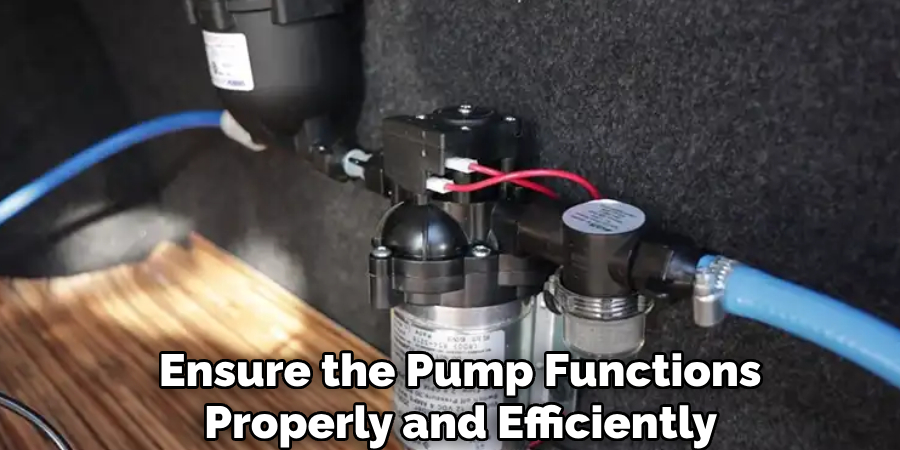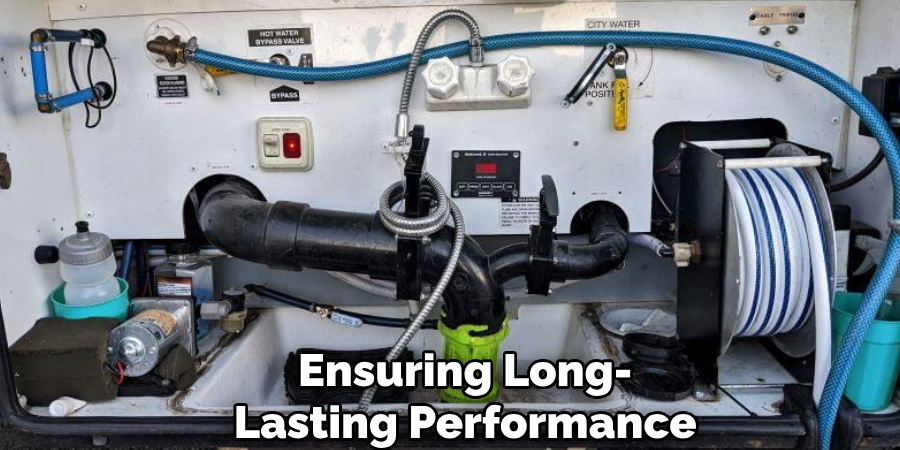Properly operating the water pump in your RV is essential for ensuring a smooth and comfortable experience during your travels. The water pump allows you to access running water from the RV’s fresh water tank, providing the convenience of water for washing, cooking, and other daily needs. Whether you’re new to RVing or need a quick refresher, this guide will walk you through the simple steps of how to turn on water pump in rv safely and efficiently.

What the Water Pump Does
The water pump in your RV plays a crucial role in providing a steady supply of fresh water throughout the vehicle. It draws water from the fresh water tank and distributes it to the faucets, shower, and toilet, ensuring you have access to water even when not connected to an external water source. The pump operates on your RV’s 12-volt system, making it reliable and functional during off-grid adventures. Additionally, it maintains consistent water pressure, allowing for a comfortable experience when using water inside the RV.
When Should You Turn On Your RV Water Pump
You should turn on your RV water pump whenever you need water from your RV’s fresh water tank and you are not connected to an external water supply. For instance, while boondocking or camping in remote locations without hookups, the water pump is essential to access water for cooking, cleaning, and showering. Additionally, you may need to activate the pump during travel stops to use the bathroom or wash your hands. However, it’s important to turn off the water pump when it’s not in use, especially while driving or when connected to a city water supply, to avoid unnecessary wear and conserve energy.
10 Methods How to Turn on Water Pump in Rv
1. Understand the Role of the RV Water Pump
Before turning on your RV’s water pump, it’s crucial to understand what it does and when you need it. The RV water pump draws water from your freshwater holding tank and pressurizes it so you can use faucets, toilets, and showers just like at home. You only need to turn it on when you’re disconnected from a city water source, like when boondocking or staying at a campsite without water hookups. Knowing this helps you avoid unnecessary pump usage, conserve energy, and protect your plumbing system from wear.

2. Locate the RV Water Pump Switch
Most RVs are equipped with a clearly marked switch to control the water pump. This switch is often located on the control panel inside the RV—commonly found near the kitchen area, the bathroom, or the entrance door. In some RVs, especially older or custom models, there may be multiple switches connected in parallel so you can control the pump from different areas. Locate the main switch before proceeding. It’s typically labeled “Water Pump” or has an icon of a faucet. Some have indicator lights that show whether the pump is on or off.
3. Ensure There’s Water in the Freshwater Tank
Attempting to run the water pump with an empty tank can damage the pump. Always check your freshwater tank level using your RV’s tank monitoring panel before turning the pump on. If the level reads empty or very low, refill the tank via the designated freshwater fill port. Many water pumps are self-priming, but running them dry can cause overheating or failure. Keeping water in the tank ensures that the pump can do its job efficiently without risking internal damage.
4. Prime the Pump If Necessary
In some RVs, especially after winterization or after replacing the pump, you may need to prime the pump before it can operate correctly. Priming involves opening a faucet and letting the pump run until water begins flowing steadily. This helps remove air trapped in the lines and allows the pump to build the necessary pressure. If water sputters or flows weakly, air bubbles are likely still present. Let the pump run for 30 seconds to a minute or until the flow is consistent. This step is essential to ensure the pump functions properly and efficiently.

5. Flip the Pump Switch to the “On” Position
Once you’ve confirmed there’s water in the tank and the lines are clear of air, flip the water pump switch to the “on” position. You should hear a gentle humming or clicking sound—this is the pump activating. It will run for a few moments to pressurize the system, then shut off automatically. The pump is designed to operate on demand, so it will only kick on again when you open a faucet or use water. If the pump continues running nonstop, there may be a leak or an open valve somewhere in the system.
6. Open a Faucet to Test Water Flow
After turning the pump on, open one of the RV’s faucets—preferably the kitchen or bathroom sink. This tests whether the pump is successfully pressurizing the system and delivering water. A steady stream of water indicates everything is functioning correctly. If the water only trickles or doesn’t come out at all, double-check the tank level and inspect the plumbing for clogs or disconnected hoses. Consistent water flow is the ultimate sign that your pump is working as intended.
7. Listen for Unusual Noises from the Pump
The sound your water pump makes can tell you a lot about its status. A normally functioning pump emits a quiet hum or buzz. Loud knocking, grinding, or constant running could signal an issue like trapped air, debris in the system, or a malfunctioning check valve. If you notice irregular sounds, turn the pump off immediately and investigate. Keeping the system clean and the pump free of obstructions extends its life and ensures quiet, reliable performance during your travels.
8. Check for Leaks in the Plumbing System
Once the pump is running and water is flowing, inspect your RV’s plumbing for leaks. Look under sinks, around the water heater, near the toilet, and along visible water lines. Even a small leak can cause the pump to cycle on and off frequently, reducing its lifespan and draining your battery. If the pump turns on intermittently without you using any water, it’s a strong indication that there’s a slow leak somewhere. Addressing leaks promptly ensures the pump operates only when needed and helps you conserve precious freshwater.

9. Use the Pump Only When Necessary
Leaving the water pump on constantly isn’t always ideal, especially when you’re away from the RV. If a plumbing fitting fails or a leak develops while the pump is on, you could end up with significant water damage. To prevent this, it’s good practice to turn the pump off when leaving the RV or when it’s not in use—like overnight or during travel. Some RVers install a remote switch to easily access the pump from multiple locations. Using the pump strategically protects your water system and gives you peace of mind.
10. Perform Routine Maintenance and System Checks
Regular maintenance ensures your RV water pump operates reliably when you need it. This includes checking the filter screen (usually located near the pump intake) for debris, cleaning the pump housing, inspecting hoses for cracks, and tightening any loose fittings. During seasonal maintenance, run fresh water through the system to flush out any buildup, and sanitize the water lines as recommended. If you winterize your RV, remember to bypass the pump or fill it with antifreeze as needed to prevent freezing damage. A well-maintained pump starts up easily and delivers dependable performance throughout your adventures.
Maintenance and Upkeep
Regular upkeep of your RV systems is crucial to ensuring long-lasting performance and trouble-free travel experiences. Begin by developing a routine maintenance schedule that includes tasks like checking fluid levels, inspecting tire pressure, and testing all electrical systems. Keep an eye on seals and seams for potential leaks and apply sealant as required to prevent water damage. Clean and lubricate moving parts, such as slide-out mechanisms and door hinges, to reduce wear and tear.
Additionally, ensure that the roof is inspected regularly for cracks or damage that could lead to more significant issues. By staying proactive and diligent, you can prevent costly repairs and keep your RV running smoothly for years to come.

Conclusion
Turning on your RV water pump ideas is more than just flipping a switch—it’s about understanding your system, ensuring everything is in place, and maintaining it for consistent results. By following these ten elaborated methods, you’ll not only get your pump running correctly but also preserve its longevity and prevent potential issues on the road. Whether you’re parked in the wilderness or prepping your RV for a family trip, knowing how to manage the water pump is an essential part of enjoying a smooth and self-sufficient camping experience. Thanks for reading our blog post on how to turn on water pump in rv! We hope you found it helpful and informative.
About the Author
Adrian Green is a passionate woodworking enthusiast who has dedicated his life to the craft of woodworking. From his early days working alongside his father in the family woodworking shop, Adrian has honed his skills and developed a deep love for creating beautiful, functional pieces with his hands. As the voice behind The Woodenify Blog, he shares his knowledge, tips, and inspiration with fellow woodworkers of all skill levels, helping them build confidence in their abilities while learning new techniques.
Professional Focus
- Specializes in DIY woodworking projects, from furniture making to home décor.
- Provides step-by-step guides, tips, and practical tutorials for woodworkers at any skill level.
- Focused on empowering readers with confidence and knowledge through easy-to-follow instructions and hands-on techniques.
- Passionate about building a community where makers can share, learn, and grow together in the world of woodworking.
Education History
University of Craft and Design – Bachelor of Fine Arts (BFA) in Woodworking and Furniture Design
Woodworking Apprenticeships – Gained extensive hands-on experience through various workshops and mentorships with seasoned craftsmen, refining carpentry and furniture-making skills.
Expertise
- DIY woodworking, carpentry, furniture making, and home décor projects.
- Creating clear, accessible tutorials and guides for beginner to advanced woodworkers.
- Helping readers experience the satisfaction and fulfillment of turning raw materials into stunning finished products.
